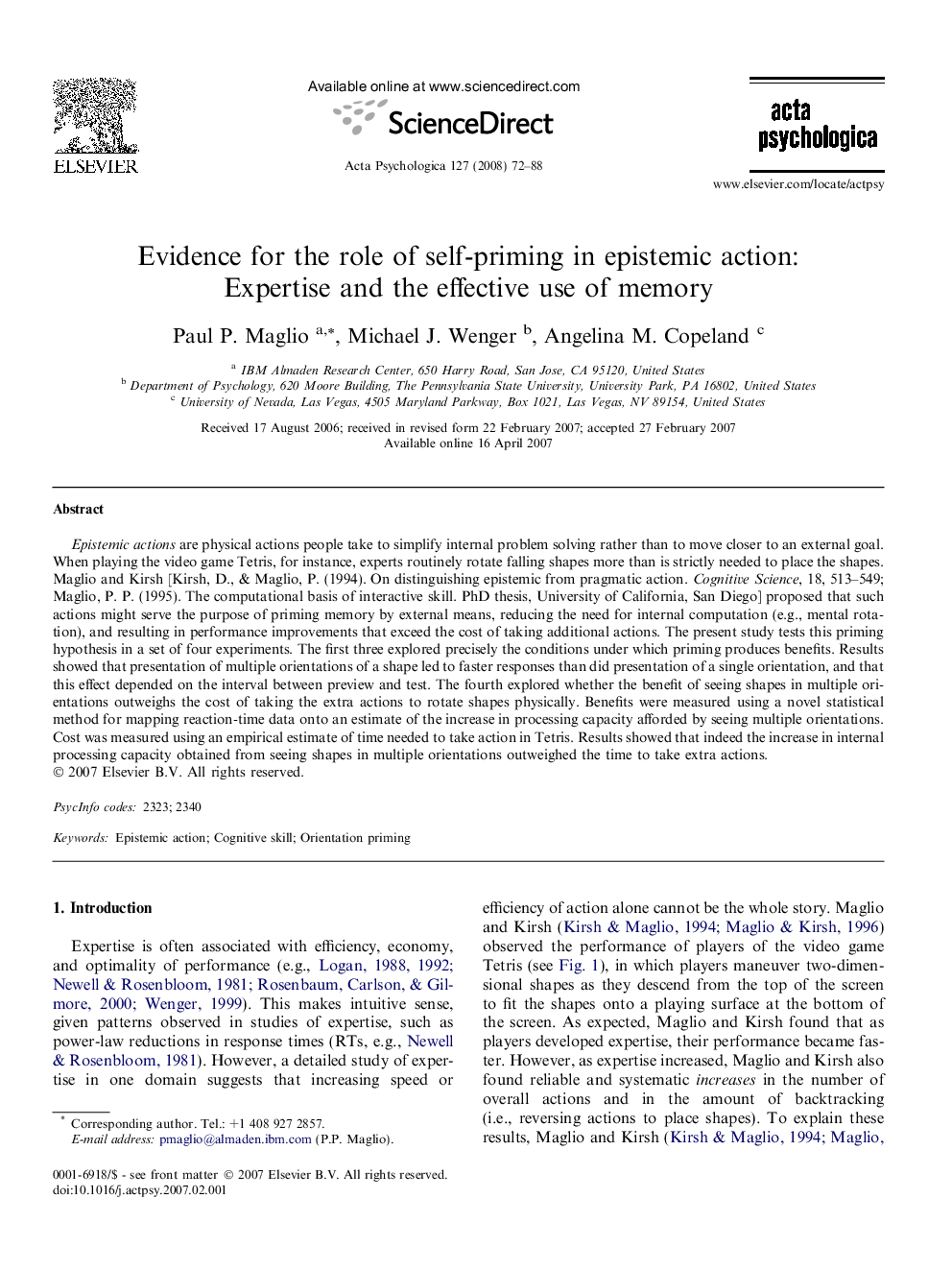| Article ID | Journal | Published Year | Pages | File Type |
|---|---|---|---|---|
| 920550 | Acta Psychologica | 2008 | 17 Pages |
Epistemic actions are physical actions people take to simplify internal problem solving rather than to move closer to an external goal. When playing the video game Tetris, for instance, experts routinely rotate falling shapes more than is strictly needed to place the shapes. Maglio and Kirsh [Kirsh, D., & Maglio, P. (1994). On distinguishing epistemic from pragmatic action. Cognitive Science, 18, 513–549; Maglio, P. P. (1995). The computational basis of interactive skill. PhD thesis, University of California, San Diego] proposed that such actions might serve the purpose of priming memory by external means, reducing the need for internal computation (e.g., mental rotation), and resulting in performance improvements that exceed the cost of taking additional actions. The present study tests this priming hypothesis in a set of four experiments. The first three explored precisely the conditions under which priming produces benefits. Results showed that presentation of multiple orientations of a shape led to faster responses than did presentation of a single orientation, and that this effect depended on the interval between preview and test. The fourth explored whether the benefit of seeing shapes in multiple orientations outweighs the cost of taking the extra actions to rotate shapes physically. Benefits were measured using a novel statistical method for mapping reaction-time data onto an estimate of the increase in processing capacity afforded by seeing multiple orientations. Cost was measured using an empirical estimate of time needed to take action in Tetris. Results showed that indeed the increase in internal processing capacity obtained from seeing shapes in multiple orientations outweighed the time to take extra actions.
